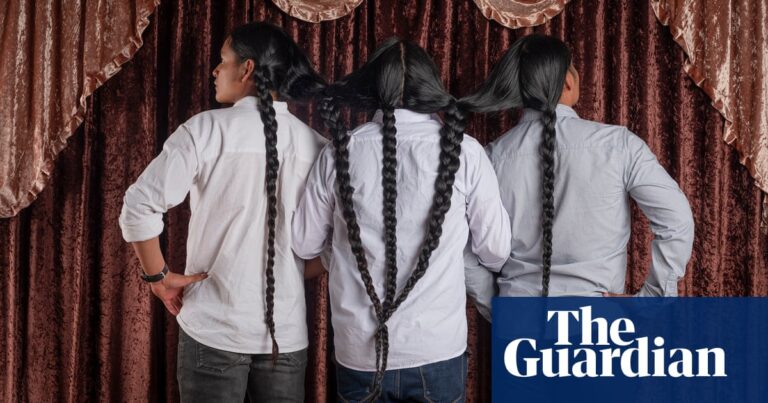In a country plagued by gang wars, Ecuador’s Otavalo city stands as a safe haven, where the Kichwa community has a rich cultural heritage, vibrant traditions, unique dress, and long Thrives with hair.
Since 2006, I have been searching for and photographing women with long hair all over South America. It turns out that in Otavalo, men also embrace the tradition of wearing long hair.
Yuyak Santillan (14 years old) and Naupak Santillan (13 years old) with their father. Touching someone else’s hair is a privilege only allowed to family members.
Braids, especially within indigenous communities, are a symbol of resistance, and their origins date back to the trauma of forced haircuts during the Spanish conquest.
Today, Otavalo’s younger generation is free of the shame and fear that once shadowed their elders, and many proudly embrace long hair and braids. This act symbolizes a commitment to cultural continuity, defiance of outside pressures, and living proof of the enduring strength of Indigenous communities.
For 22-year-old Caterini Pupiares, growing her hair long is about respecting her family’s customs. For Josbel Maxias, 18, it is a cultural symbol and represents the strength of his heritage.
Clockwise from top left: Esther Bonilla and her son Jose, 10, live in Colombia but return to Otavalo regularly. Dylan, 16, sees his long hair as a restoration of cultural heritage and an assertion of identity. Churchgoers of San Francisco de Otavalo Church. Walter Iambela and his son Jacob visit family graves
In Otavalo, long hair is a symbolic connection to the ancestral land and reflects the Kichwa connection to nature and the spiritual. Many of the people who migrated continue to preserve their traditions. Walter Iambela, 39, and his son Jacob, 12, live in Switzerland and keep their hair long. “Culture will survive as long as we continue with our habits, and we all have to abide by them wherever we are,” Walter says.
In Kichwa, a long hair contest is held every year during Paucal Raymi, which means “Festival of Flowering.” The ancient Andean ritual honors the creator of the world, Pachamac or Pacha Camac, and serves as a ritual of gratitude and sharing for the gifts given to us by Mother Earth, Pachamama. The contest aims to celebrate Otavalo’s long-hair tradition and encourage young people to keep it alive.
Eric Alungo (22 years old) and Dylan (16 years old). Alungo loves Kichwa culture, but wants the freedom to make her own choices. “There’s a chance I could go back, but it’s just my decision,” he says.
Clockwise from top left: Participants in the long hair contest are Kuri Guerrero, 19, and Apauki Guerrero, 15. Nestor, 16 years old. Weyla Muller, 10 years old. Yuyak and Naupac Santillan
Known for their entrepreneurial spirit, the Otabareño family has shown adaptability by balancing modernity with ancestral traditions. However, Otavalo leaders are concerned about the gradual loss of this cultural identity and recently passed a resolution requiring minors to obtain parental consent to have their braids cut at local barbershops. issued.
“For us, hair is more than just a strand of hair. It symbolizes life and the heritage we cherish throughout our lives. It is a precious treasure, similar to the shining rays of the sun, with spiritual qualities and It is a complex connection between human nature,” says Yarina and Estefania Espin.
Education and cultural transmission within the family ensure the continuation of family traditions, while engagement with the international community increases the visibility of the family’s culture and contributes to economic success and global pride.
Ruminawi Kachimuel, 46, says: It was a long struggle to proudly show off our braids. As a people, we have endured significant hardship. Now I teach my children that we must learn from our ancestors and pass on to future generations what it means to be Kichwa. ”

